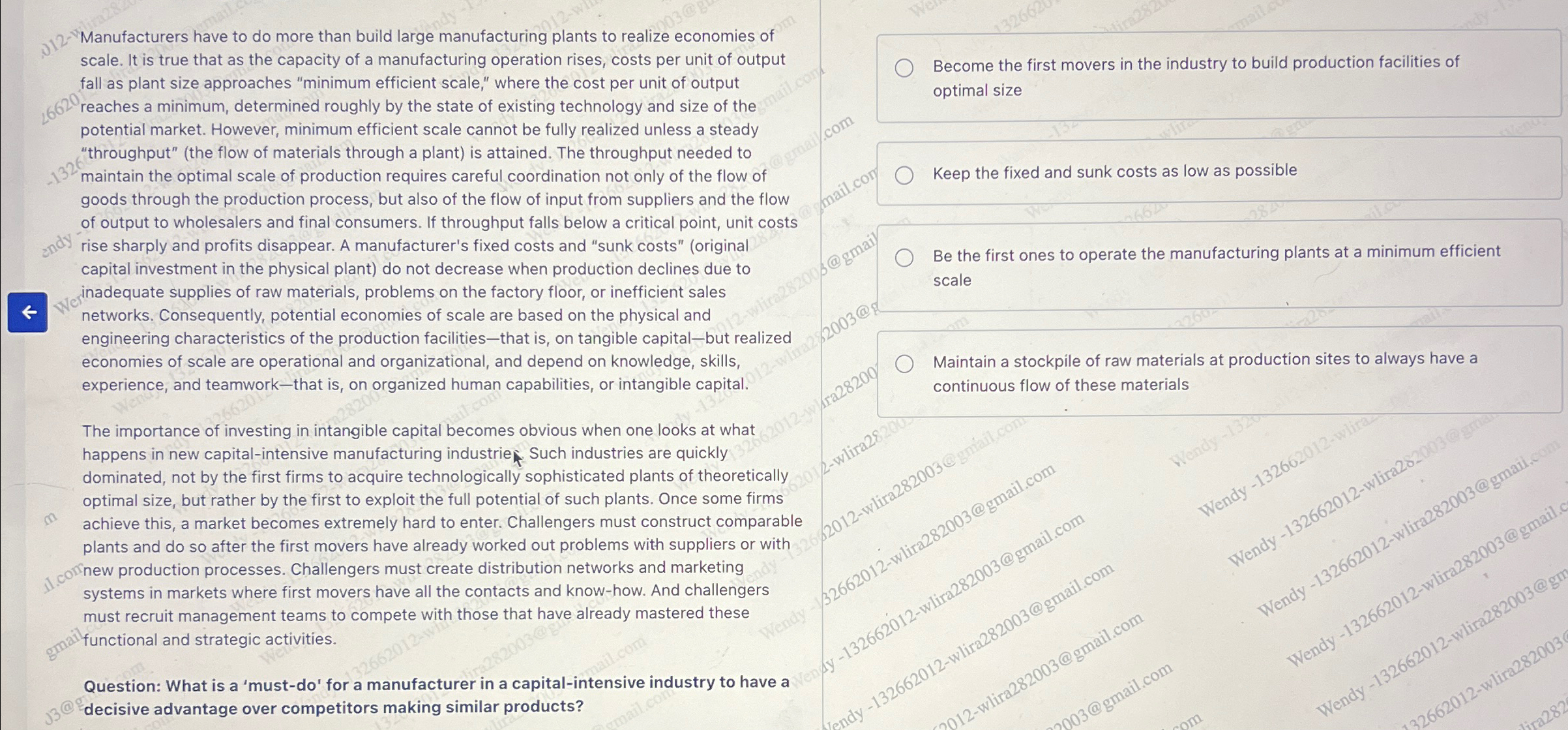Answered step by step
Verified Expert Solution
Question
1 Approved Answer
Manufacturers have to do more than build large manufacturing plants to realize economies of scale. It is true that as the capacity of a manufacturing
Manufacturers have to do more than build large manufacturing plants to realize economies of scale. It is true that as the capacity of a manufacturing operation rises, costs per unit of output fall as plant size approaches "minimum efficient scale," where the cost per unit of output reaches a minimum, determined roughly by the state of existing technology and size of the potential market. However, minimum efficient scale cannot be fully realized unless a steady "throughput" the flow of materials through a plant is attained. The throughput needed to maintain the optimal scale of production requires careful coordination not only of the flow of goods through the production process, but also of the flow of input from suppliers and the flow of output to wholesalers and final consumers. If throughput falls below a critical point, unit costs rise sharply and profits disappear. A manufacturer's fixed costs and "sunk costs" original capital investment in the physical plant do not decrease when production declines due to inadequate supplies of raw materials, problems on the factory floor, or inefficient sales networks. Consequently, potential economies of scale are based on the physical and engineering characteristics of the production facilitiesthat is on tangible capitalbut realized economies of scale are operational and organizational, and depend on knowledge, skills, experience, and teamworkthat is on organized human capabilities, or intangible capital.
The importance of investing in intangible capital becomes obvious when one looks at what happens in new capitalintensive manufacturing industrie Such industries are quickly dominated, not by the first firms to acquire technologically sophisticated plants of theoretically optimal size, but rather by the first to exploit the full potential of such plants. Once some firms achieve this, a market becomes extremely hard to enter. Challengers must construct comparable plants and do so after the first movers have already worked out problems with suppliers or with new production processes. Challengers must create distribution networks and marketing systems in markets where first movers have all the contacts and knowhow. And challengers must recruit management teams to compete with those that have already mastered these functional and strategic activities.
Question: What is a 'mustdo for a manufacturer in a capitalintensive industry to have a decisive advantage over competitors making similar products?
Become the first movers in the industry to build production facilities of optimal size
Keep the fixed and sunk costs as low as possible
Be the first ones to operate the manufacturing plants at a minimum efficient scale
Maintain a stockpile of raw materials at production sites to always have a continuous flow of these materials

Step by Step Solution
There are 3 Steps involved in it
Step: 1

Get Instant Access to Expert-Tailored Solutions
See step-by-step solutions with expert insights and AI powered tools for academic success
Step: 2

Step: 3

Ace Your Homework with AI
Get the answers you need in no time with our AI-driven, step-by-step assistance
Get Started


